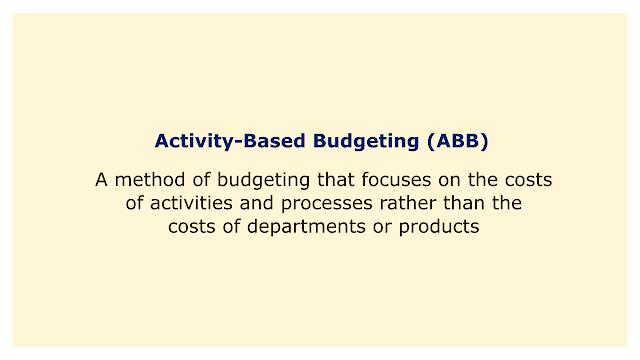 |
| Image: Moneybestpal.com |
Activity-Based Budgeting (ABB) is a budgeting technique that puts less emphasis on the costs of departments or goods and more on the costs of activities and processes.
By connecting the resources allotted to the outputs and objectives obtained, ABB seeks to increase the accuracy and efficiency of budgeting.
The main steps of ABB are:
The benefits of ABB are:
The challenges of ABB are:
The main steps of ABB are:
- Determine the important procedures and activities that assist the organization's aims and objectives.
- Assess the resources (such as labor, supplies, tools, etc.) needed for each activity and process.
- Calculate the cost factors (such as volume, time, complexity, etc.) that influence how many resources are used in each activity and process.
- Based on resource usage and the overall budget available, determine the cost per unit of each cost driver.
- According to the anticipated demand for each cost driver, allocate the money to each activity and process.
- The budget and the organization's strategic strategy are connected in a very clear way through this.
- In the activities and processes, it aids in locating and getting rid of waste, inefficiency, and redundancy.
- In the business, it promotes a culture of innovation and constant progress.
- It makes it easier to rank different tasks and methods according to their worth and significance.
- The budgeting process becomes more transparent and accountable as a result.
The challenges of ABB are:
- The activities, processes, resources, and cost drivers must be identified and measured using a sizable quantity of data gathering and analysis.
- Allocating some indirect or shared expenses to particular activities or processes may be challenging.
- Departments or units vying for scarce resources may become at odds with one another or show opposition.
- Certain qualitative or intangible elements of the activities or processes that are crucial to the success of the company might not be captured.
